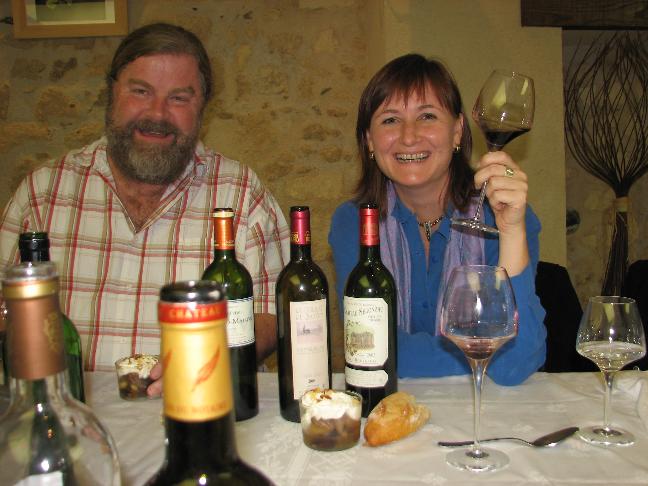Whistling in the dark perhaps, but when I wrote this wine survey for the Financial Mail last month, I opined that with exports and local sales up and quality never better, wine is one bright spot in a gloomy retail landscape.
When it comes to wine, vintage matters, even if most restaurant wine lists ignore digits – except when it comes to prices, which always increase, quality notwithstanding. This time last year UK magazine Decanter was running shock! horror! stories about the SA wine industry: exports down, growers drowning in a lake of unsold reds and more “for sale” signs on farms than oak trees in Stellenbosch.
This year is different: the Nostradamus nostrums have moved to the broadsheets with a “burnt rubber” character in SA reds detected by pundits in The Times and The Observer although initial accusations may have more than a hint of a whiff of sour grapes about them, made as they were the week after the Springboks trounced the UK at Twickenham. Reports of rubber could be good news as the last wines to be assailed for burnt rubber aromatics were Aussie Shirazes, with that continent now number one supplier to the UK.
A weakened Rand has injected new fizz into exports and some non-traditional customers are coming to the fore: Angola is now number five destination for SA wine (before recent xenophobic eruptions) with sales up by a factor of 42 while Australia (volumes up 14 times) and New Zealand (up six fold) can’t get enough SA wine, even though their own is widely hyped. Perhaps Rapport’s 850 000 white South Africans who emigrated between 1995 and 2005 are thirsty, maybe the Australian drought is responsible, or all the above.
On the local scene, there’s a new dynamic: commercial brands are smashing through the glass ceiling of wine snobbism with trusty Nederburg rated best producer at the recent Old Mutual Trophy Wine Show at which Zonnebloem trousered a trophy for best white. New icons are emerging from the barrel with eye-watering price tags: Jeremy Ord’s Jem red blend from Waterford is R700 a pop while the long awaited range of Anthonij Rupert wines are priced in the R300s (whites) and R400s (reds). Even a famous teetotaler like Gary Player has jumped onto the bandwagon and made a wine in the Quoin Rock cellars of his friend, treasury outsourcing mogul Dave King, with Business Day wine pundit Michael Fridjhon consulting. Gauteng premier Mbhazima Shilowa and friends are increasing volumes on their well-received Epicurean red blend.
Tokyo Sexwale stunned the market by shelling out R105 million for the Durbanville estate Bloemendal of Jackie Coetzee, brother in law to Jan Scannell, CEO of Distel. By paying over twice its viticultural value, Tokyo must have something up the sleeve of his elegant Mao jacket and neighbours will be keeping an eye out for rezoning applications. As they already do in Constantia where Tokyo is now landlord to the vineyards of Constantia Uitsig. How the wheels have turned. This former inmate of Robben Island can now sit in a riempie stool and contemplate the prison from where he must have gazed longingly at the Suider Terras vineyard of Bloemendal on the mainland that produces quintessential SA Sauvignon Blanc.
While financial scandals in BEE circles continue to unravel – Lindiwe Wines hit the wall to the tune of R5 million recently (owing R4 million to the National Empowerment Fund and R1 million to KWV for the wine) – there seems to be light at the end of the bottle. UK commentator Tim Atkin commended several empowerment wines to the readers of The Observer last month, calling them “generally fresher, cleaner and better balanced” than the “tired, even oxidized bulk wines that no one else wanted to buy” that was empowerment stock in trade as recently as 2006.
At the end of 2007, one of the Cape’s spiciest Young Turks, Bruce Jack from Flagstone, sold out to Constellation, the largest wine producer in the world. He is now plotting world domination like a vinous Dr. Strangelove from his former dynamite factory in Somerset West. An ayatollah of terroir (simply put, wines should taste of the place the grapes grow) Jack is also a poet, so let’s hope the grey suits at Constellation won’t nix brand names like “Backchat blend”, “Writer’s Block Pinotage” and “Love Handles.”
New dogs are learning new tricks all over the place. Traditional Tulbagh, home to Theuniskraal riesling and Krone Borealis bubbly, is sweeping the boards at competitions with Saronsberg and Rijks squatting on the victor’s podium. New appellations are being opened up apace: beached salty seadog Piet Dreyer is making big and bold statements at Raka out Stanford way while down south in Agulhas, First Sighting battles prevailing winds to make the coolest climate wines in the Cape.
One final piece of good news was vintage 2007: widely tipped as the vintage of the decade, most whites are already on the shelf (Sauvignon Blanc and Chenin Blanc especially good) while cellars should be filled when reds emerge later this year and next.




